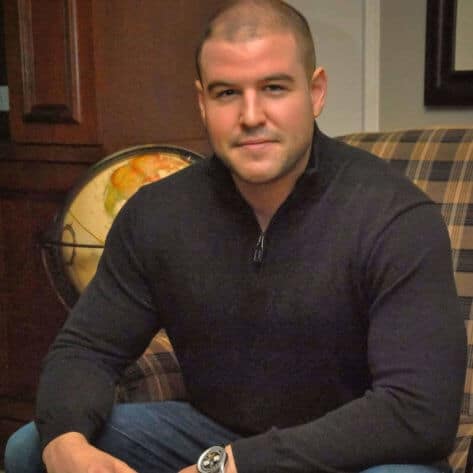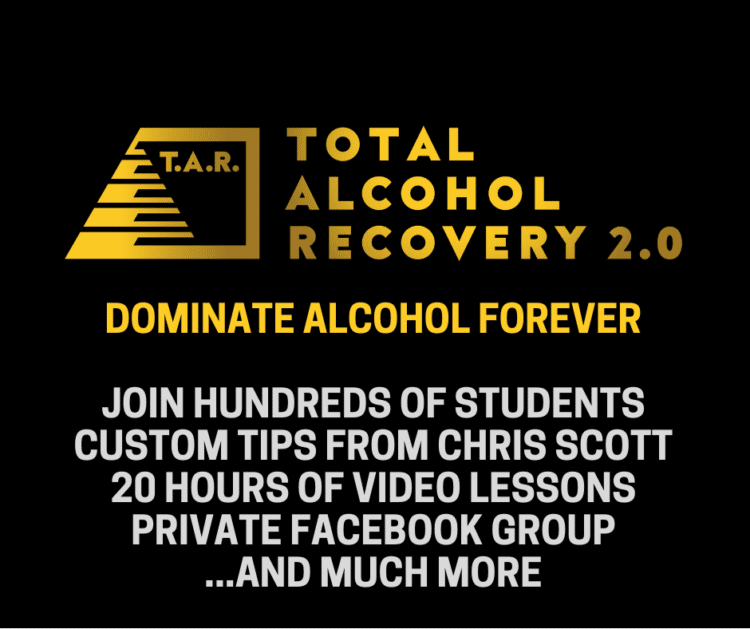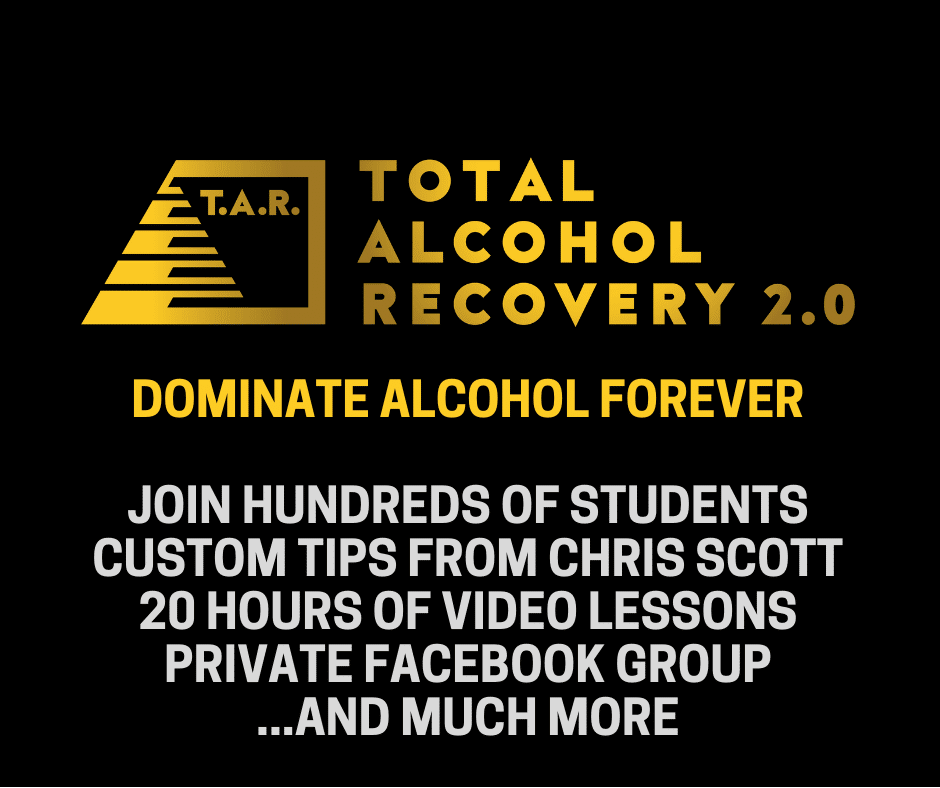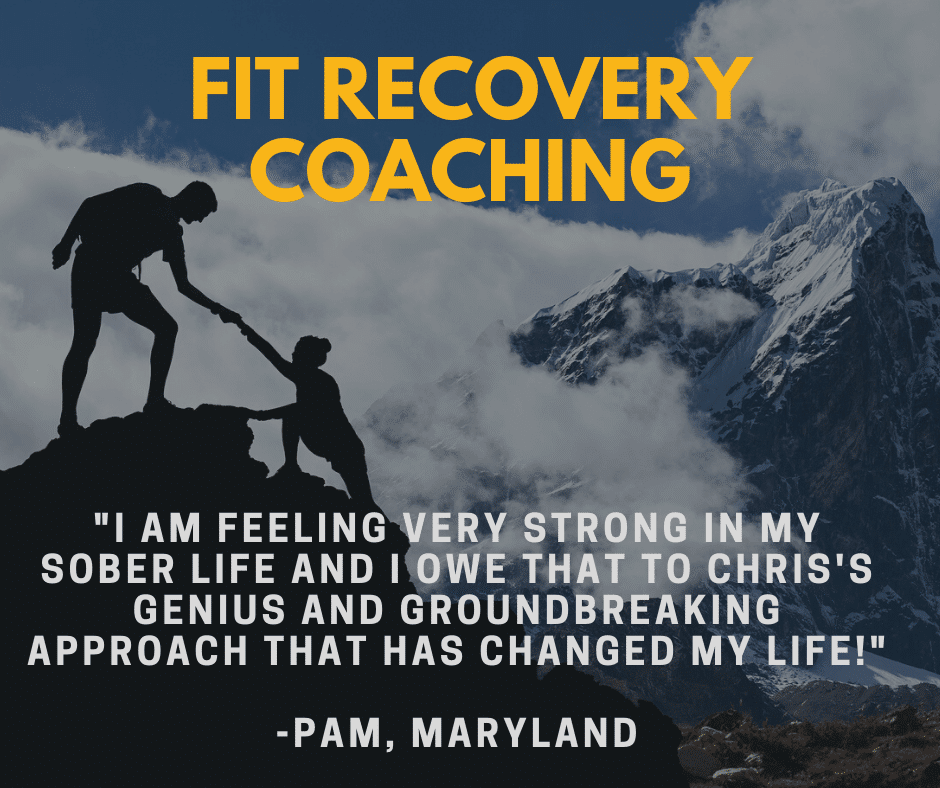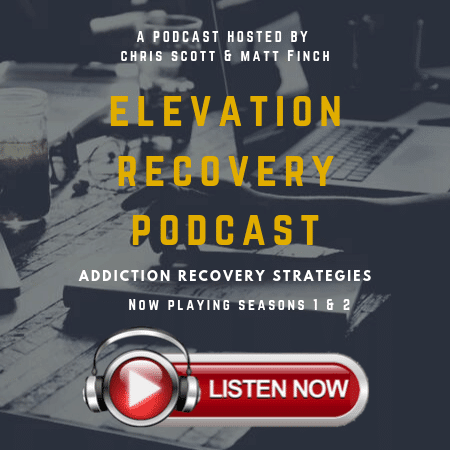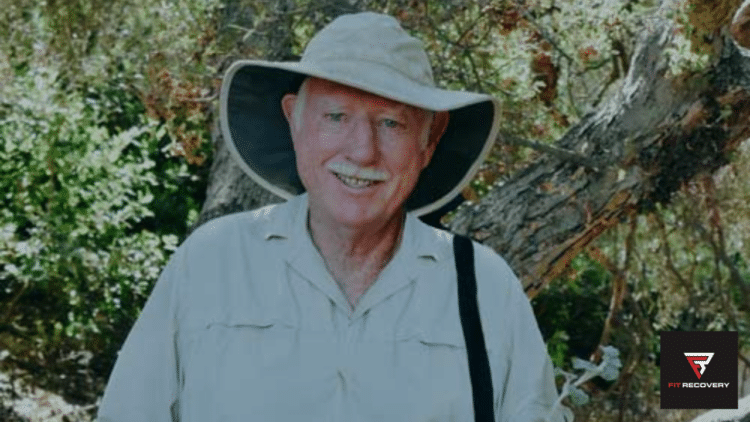
In episode 292 of the Elevation Recovery Podcast, Matt Finch interviews John Finch, the co-founder of and teacher at Self-Heal School of Herbal Studies and Healing. They discuss nutrition, micronutrients and macronutrients, the typical American diet, and seasonal depression.
John Finch is the co-founder of Self-Heal School of Herbal Studies and Healing, and he has been an herbal medicine maker and teacher for more than 35 years. John teaches holistic nutrition, psychedelic shamanism, herbal fundamentals, and more. John also takes folks out on Herb Walks once a month in the San Diego County region.
Links to Resources Mentioned in this Episode:
Here are some ways to learn from this episode:
- Watch the video
- Listen to the audio
- Read the transcript
- Right-click here and save as to download this episode on your computer
John Finch: So this thing about the dietary quality index, DQI, they've established this for the Standard American Diet, and this is out of 100, and I think this is inflated as well. It's 11. And again, if you got 11 out of 100 on test, that would most... 60 is a D. Below 60 is an F. How far below 60 is 11? That's crazy.
Matt Finch: Hi, my friend Matt Finch here introducing the Extraordinary Flagship Program created by Chris Scott, the founder of Fit Recovery. This is a one-of-a-kind online program for dominating alcohol through biochemical optimization, mindset, and more. Why continue to test out trial and error when you could follow a powerful and proven 100% customizable system?
Get instant access to over 20 hours of step-by-step video instruction. The ability to ask your questions of Chris Scott and his head coach, Matt Finch. That's me. And the rest of the life-changing and transformation-catalyzing features and benefits included in the program. To learn more, read or watch testimonials, and get started, visit fitrecovery.com/course. And to save an additional $25, use coupon code 444 at fitrecovery.com/course.
Announcer: Thanks for tuning in to the Elevation Recovery Podcast, your hub for Addiction recovery strategies, hosted by Chris Scott and Matt Finch.
Matt Finch: Welcome to the Elevation Recovery Podcast. My name's Matt Finch, your host for this episode. As the guest for today, my dad, John Finch, master herbalist, and nutrition teacher, shaman, and much more. Right now, I'm going to take a chug of this something Peking Royal Jelly Oral Liquid. Hold on real quick.
John Finch: [inaudible 00:01:58].
Matt Finch: I'm going to wash it down with some Kyäni Sunrise, super fruit, super antioxidants, superfood drink. And now for today's episode. My dad's going to be talking about basic nutrition kind of fundamentals, the macronutrients, micronutrients. What nutrition is. The Standard American Diet and seasonal affective disorder. Right now, people are starting to get depressed, low energy as we have the declining kind of sunlight going into less and less daylight throughout the day.
And, of course, the sad American... Standard American Diet can exacerbate that, make it much worse. So we're going to be talking about number one, what is nutrition, and mostly what are the different macronutrients? How do those differ from the categories of micronutrients? What is micronutrient density? What is the typical American diet lacking in and excessive in?
So this can be for you a nuts and bolts fundamentals, just on the kind of core basics of nutrition, building calories, and building a micronutrient protocol for yourself. So thanks so much, dad.
John Finch: Well, thanks for having me.
Matt Finch: And so, when did you start teaching nutrition? Was it at one of the massage colleges or... I know it's been probably decades since you've been teaching.
John Finch: It's been about 40 years.
Matt Finch: Phew. And so you've gone over this topic a whole bunch, and you're really good at explaining because, otherwise, it can be really technical. But explaining to people kind of the basics of what's a carbohydrate, for example. What's a fat? What is fiber? So why don't we start off by just explaining that. What is a macronutrient? What are the types? Why are those important, et cetera?
John Finch: Okay. Well, macronutrients. Macro means large. So these are things we need large amounts of, and they include what we call the energy-yielding nutrients, fats, proteins and carbs, carbohydrates. So the Standard American Diet is really poor for these things. But if you know how to do it, you can get the nutrition you need from these three food groups.
Your protein. We need about 50 grams of protein a day. And, of course, it depends on your activity level. So it's all based on the calorie burned per day. So I played basketball today, and so for a day where I'm active like that for a couple of hours, I need about 2,800 calories. For a sedentary day, I need about 1,800.
But they base most nutritional analysis on 2,000 calories a day. So, basically, it breaks down to ideally 10% of those calories from fat. What is a fat? Fat is composed of carbon, hydrogen, and oxygen, just three elements. And there's different kinds of fat. There's saturated fat, and there's unsaturated fat. Saturated fat actually comes in a couple of categories too.
The long-chain saturated fat, which we get from animal foods, are the bad ones because we tend to have those build up on the inside of our veins and capillaries, arteries causing hardening of the arteries, atherosclerosis, arterial sclerosis. And the unsaturated fats are the liquid fats.
You can tell a saturated fat because it's solid at room temperature. A unsaturated fat is a... A unsaturated fat is liquid at room temperature. Saturated fat is a solid. Like a stick of butter is an example of a saturated fat. Olive oil is an example of an unsaturated fat and-
Matt Finch: My two favorite fats.
John Finch: There you go. And, of course, we could spend all day getting into the fats, but I'll try and keep it simple. Basically, your saturated fat comes in two categories, long-chain and short-chain. Your long-chain saturated fats, which come from animal foods, are the ones that will kill you, cause high blood pressure, heart disease, strokes, coronary artery disease.
And your short-chain saturated fats which come from like avocados. Avocados have saturated fat in them. But it is what we call a short-chain saturated fat. And basically, the body just burns those for calories, and they don't present a problem. So you need to get about 10% of your calories from for fat.
So if that was a 2000-calorie diet, that's going to be about 10% of 2000 is 200 calories. Fats have four calories per gram. So that's going to end up being about 22 grams.
Matt Finch: Four calories per gram?
John Finch: Four...
Matt Finch: Fats.
John Finch: Nine calories [inaudible 00:07:38].
Matt Finch: Yeah, yeah, yeah.
John Finch: Yeah, yeah. Sorry. Thanks for correct me.
Matt Finch: I'm like, "Whoa, that's some... What are the new fats that are out?"
John Finch: Yeah, yeah. They're called low cats. No. So what we don't want is those long-chain saturated fats. Again, the short-chain saturated fats, like we get in avocados, the body just burns for energy, and that's not a problem. So of your... 10% of your calories from fats, you only want 10% of those from saturated fats. And so that kind of covers fats. Proteins.
Matt Finch: Protein, protein, protein, protein.
John Finch: People think proteins are king, somehow magical. Well, guess what? Proteins... You get the same number of calories from a gram of protein as you do from a gram of carbohydrate. So people that try to lose weight by getting on a high protein diet or something or a low carb diet is a joke because you get the same number of calories from each, and whatever you don't burn, you wear on your behind or wherever. So we try to keep in bounds there.
So your proteins, your ideal protein source, actually is from greens. I do plant identification walks, and we come across mustard greens. Mustard grows around here, San Diego. And I tell my students, "There's three times more protein in mustard greens than there is in roast beef." And they say, "What. How can I convince my boyfriend of that? He's a bodybuilder."
I say, "Take him to the zoo and stand him in front of the gorilla or the orang. What are they eating? They're eating leaves. And guess what? They are classified as great apes." And guess what? We are classified as?
Matt Finch: Great apes.
John Finch: We are a great ape, and we are leaf-eaters by design. So when we talk about the nutrients in a food, we have to equate that with the number of calories we get from that food. It's called nutrient density. So yeah, a serving of roast beef, which is four ounces, a quarter pounder, gives you 25 grams of protein, which is half your protein requirement for the day generally, which is 50 grams. But how much is that going to cost you in calories? 425 calories. I like to put that in terms of dollars and cents, which people understand better.
Your allowance is $20. That quarter pounder is going to cost you $4,25, which is what, quite a lot of your allowance on that protein. So it has 25 grams of protein but 425 calories. Guess what? A hundred of those calories are from the protein. What are the other 325 calories from? Saturated fat which will kill you. A serving of mustard greens, and these are greens in general, only gives you four grams of protein. Boy, that's not much. But how much is it going to cost you? 22 cents. 22 calories.
So if you do the math grams of protein per calorie or calories per gram, it actually breaks down to three times more protein per calorie from green leavies than from roast beef. So that's a very poor source of protein. And, of course, it comes bundled with cholesterol, which no plant in the world has any of. That's all animal products.
So your better source of your proteins are beans, lentils, nuts, seeds, and whole grains, besides the green leavies. And if you are going to eat animals, and a lot of people don't, then you're looking at fish, seafood, and eggs. Well, you want to make sure you don't eat too many eggs because an egg has as many grams of cholesterol in it as a whole chicken. Because, guess what? An egg is a whole chicken. It just hasn't been born yet.
Matt Finch: I just had eggs right before I came over here.
John Finch: Well, yeah, eggs are okay.
Matt Finch: Yeah.
John Finch: But you just don't want to...
Matt Finch: Well, I had three of them, not two dozen.
John Finch: Yeah, that's right. So that brings us to carbohydrates.
Matt Finch: Carbs.
John Finch: Carbs. Yeah. Carbs are made out of exactly the same thing as fat.
Matt Finch: What?
John Finch: Carbon, hydrogen, and oxygen. In fact, you could call a carbohydrate hydrated carbon. Carbon and water. Carbon and H2O. That's the three elements in carbs. They're the same as three elements in fat. It just that the fat molecule is a more complicated molecule, so it stores more energy.
So whereas a carb will give you four calories per gram, a fat, as we talked about before, gives you nine calories per gram. And so you want about 40% of your calories coming from carbs. But we need to clarify about carbs because what most Americans eat the carbs are refined carbs. And people are saying, "Oh, carbs are bad, carbs are bad."
Matt Finch: White bread.
John Finch: Yeah. The carbs that Americans eat are bad, right. They're raped grains. Raped. What does that mean? It means refined. Refined doesn't mean they're sent to finishing school, walking with a book on their head, so they walk nice and straight.
It means in the 1950s, they started removing the bran from grains to make it more digestible supposedly. Well, the bran is what contains the fiber, which is super important for health and nutrition. It also contains your B vitamins. In fact, when they started doing that, people started getting deficiency diseases, beri-beri and pellagra, deficiencies of B1 and B3.
Matt Finch: Alcohol depletes those too.
John Finch: That's correct. And so people start getting health issues, people started dying. We were losing taxpayers. The government went, "Oh no, we need taxpayers." So they passed some regulations saying that these companies had to add back in some of these nutrients.
Matt Finch: Fortified.
John Finch: Fortified. We call it-
Matt Finch: Falsified.
John Finch: Yeah, we call it enriched. You can look on the label of things, and I recommend people do that. And what you're going to look at on the nutrition label is the word enriched.
Matt Finch: Which means depleted, really.
John Finch: Which means raped.
Matt Finch: Raped.
John Finch: Which means... My take on that is you get mugged. A enriched mugging is where the mugger takes all your money and gives you bus fare home. Okay, that's your refined grains.
Matt Finch: But they taste so good and they give us a drug-like effect.
John Finch: Because all you're tasting is sugar, just the starch inside. Besides that, they remove the germ, which is the life of the grain. What's going to become the new plan if you let it do that? But they removed the germ because that has your essential fatty acids in there, which have a very short shelf life, your EFAs.
So if you leave those in there, then that food is going to go rancid pretty quickly. If you remove those, then you can... wonder bread will sit in the shelf for the rest of your life because it's just-
Matt Finch: Wonder bread because I wonder why it hasn't spoiled so yet.
John Finch: That's right.
Matt Finch: I wonder why it's not spoiling.
John Finch: So that's 51% of our calories come from refined grains.
Matt Finch: Not my calories.
John Finch: Yeah, we're talking about the Standard American Diet. 42% of the calories in the Standard American Diet come from animal foods. Okay.
Matt Finch: And not typically grass-fed, free-range. More like the antibiotic, hormone, steroid pumped, totally cruelly treated animal products.
John Finch: And fed genetically modified commercially grown grains.
Matt Finch: Inflammatory omega-6, nine stuff combos.
John Finch: So the problem with your meat is that, as Matt said, they're pumped full of antibiotics, growth hormones, and they're full of saturated fat and cholesterol and not great, really. Whereas if you get...
Matt Finch: Wild-caught salmon, for example.
John Finch: Wild-caught salmon. I just have some in the fridge right now.
Matt Finch: Oh nice.
John Finch: So your animal foods in general are poison, just to put it quite bluntly.
Matt Finch: You mean McDonald's have healthy meat in them?
John Finch: What McDonald's is loaded with is fat, and the reason they put fat in foods is that this is a 411 here. Fats carry flavor to the taste buds. So the more fat a food has in it doesn't taste better. It makes you able to taste it better. So you're not going to eat a stick of butter. Heck no.
But are you going to eat your toast without butter on it? No, it's called dry toast. It doesn't taste like anything. You put butter on it, all of a sudden, you get the flavor. So, and all your fast foods are full of fat because they taste... you taste them better.
Matt Finch: And all the snacks Willow likes the most, like goldfish and chocolate chip muffins and stuff like that.
John Finch: Yeah, the problem with those kind of snack foods is there's a kind of fat in there that's really, really, really bad. And it's called trans fat. Now, it was only a few years ago that they started making it illegal to sell this stuff without putting that there's trans fat on the nutritional label.
Unfortunately, to get that legislation passed, the lobbyers lobbied so heavy for that to get that passed, they had to make it so that if it had less than a half a gram of trans fat per serving, they could put zero.
Matt Finch: Wow.
John Finch: And maybe it's got 10 servings in the package. So you got five grams of trans fat. What's wrong with trans fat? It is a phony fat. It's an essential fatty acid, which your body's going to take and try and plug it into a cell wall. Your cell walls are essential fatty acids. And cell walls aren't like the wall of your house. They're a living membrane.
Matt Finch: Permeable.
John Finch: Semipermeable. And they make choices about what to let in and what not to let in. They can let in some things and not others. And that's if you have healthy EFAs in the cell wall, central fatty acids. But if it plugs in an essential fatty acid, that looks like it's okay, but it's not. It's a trans fat. It's like Frankenstein.
Matt Finch: Frankenfats.
John Finch: Frankenfats. What was wrong with Frankenstein? He made poor choices. He was throwing... This little girl was throwing flowers in the mill pond there, and he ended up throwing the little girl in, drown her. Well, the villagers didn't care for that much, and they burned him up in the mill. So if you put these trans fats into your cell walls, that's like Frankenfats.
They make poor decisions, and one of two things happen, neither of which is good. One, it lets you in everything, cell dies. It doesn't let in anything, cell dies. Well, we can make new cells, but how much of that are you going to keep up with all these amount of trans fats in the diet? They're killing people.
So we do need some fat for sure. But what is fat used for in the body? Well, as I was saying, cell walls. We also get calories, energy from fats, but we need fats also to absorb our fat-soluble vitamins, which are your vitamin K, E, D, and A. We need fats to help absorb those. Okay. So those are your pretty much macronutrients, proteins, fats, and carbs. All right.
And again, you don't want refined carbs. You want whole grains and ideally sprouted whole grains. So what's the difference? Well, a grain has a lot of starch in the middle of it that, like an egg, has a bunch of that white, which is the protein, which is going to turn into the chicken. And, of course, the yellow of the egg is the germ of a grain. So if you're eating carbs and you're eating grains, you want to eat whole grains.
But even better is sprouted whole grains. So we buy bread at the health food store, and we buy sprouted. So what's the difference? The grain has a bunch of starch in it that's going to become the plant as it sprouts and develops. Once you sprout it, a lot of that... most of that starch in there, which are calories, converts to fiber. And so you get less calories. Oh no. That's good because you're going to get more nutrient per calorie that way. It's going to be a higher nutrient density.
And guess what? Fiber is one of the most deficient elements of the Standard American Diet. There's something called RDA. That's the old word for it, but we'll use it because that's what people use. It's actually something a little bit different now. But it's Recommended Daily Allowance. And for example, the RDA for vitamin C is 60 milligrams per day.
Well, that's not the ideal amount. I took two grams of that today, 2000 milligrams. And if I'm fighting off a cold or flu or something, I'll take eight grams a day. But if you get 60 milligrams, then you won't get scurvy. And that's what RDA means. It's the minimum amount of that nutrient required to prevent deficiency disease. So there's also something called DV, Daily Value.
And that means that if you eat the Standard American Diet, which is SAD, by the way, then that's how much you'll get. Well, the DV for vitamin C is 60 milligrams. And, of course, it's not that for everybody. But who do you know that has had scurvy? Nobody. Because so as bad as the Standard American Diet is, it does provide us with enough vitamin C to prevent scurvy. Well, the RDA for fiber is 35 grams a day.
Now considering that 93% of our calories come in packages with zero fiber, that's animal products and refined grains, then the Daily Value is actually listed as 15.
Matt Finch: Wow.
John Finch: So if the RDA is 35 and the DV is 15...
Matt Finch: That's low.
John Finch: And I think that's inflated. If 93% of our calories come from foods with no fiber, so then we ask ourself the question, what is the deficiency disease that we suffer from if we lack that 35 grams of fiber a day? Heart disease, cancer, and obesity, diabetes. And those are the main things that are killing people in America.
And it's largely because they're not getting enough fiber. And a lot of people don't know that. A lot of people don't know that. So that's super important. So those are your macronutrients. 35 grams, that's a macro. That's a lot. So the other end of things is micronutrients.
Matt Finch: Micros.
John Finch: What does that mean? That means smaller amounts of things. So your micronutrients are your vitamins and minerals. So what do vitamins do? Vitamins are actually assisting enzymes in the body do their job. They're co-factors for enzymatic activity.
And your water-soluble vitamins are folate or folic acid, which is B9, and your other B vitamins, vitamin C. And those are your water-soluble micronutrients. Your fat-soluble vitamins are your A, D, E, and K. These are things that we only need little bits of, small amounts of.
Matt Finch: So that drink that I had at the beginning of this, the Sunrise, that was all the vitamin B, The B vitamins, vitamin C, and they call it Sunrise because it's meant to be drank in the morning and it has all water soluble. Then the evening, when sun sets, the fat-soluble the vitamin A, the vitamin D. I don't think they put K in it. And even the omega-3 is okay. I'll shut up.
John Finch: That's all right. So yeah, in the morning, the reason we're going to have it in the morning with breakfast, we're breaking our fast. We haven't eaten for probably 12 hours. You maybe ate your dinner at seven o'clock in the evening. You're going to have your breakfast at seven in the morning. Half your day, you haven't had food. That's a fast. You're going to break that with what, ideally, fruit. And fruits basically got your water-soluble vitamins in it, and it's mostly watery. Doesn't have a lot of fat in it.
So this is a good time to take your fat... your water-soluble vitamins. Your B vitamins and your vitamin C. And in the evening is when we want to take our fat-soluble vitamins because we're going to probably have some fish or some poultry or something that has more fat in it. So the minerals also break down into macro minerals, micro minerals, and trace minerals. Your macro minerals are things like calcium and potassium.
For example, I take a supplement of calcium that's 500, and it's bundled with magnesium actually, which is 250 milligrams, cal-mag because they help absorb each other. But 500 milligrams, that's a half a gram. That's a lot in the terms of the minerals. So those are considered macro minerals, calcium, potassium, phosphorous, magnesium, and some others. Your micro minerals are things that you need much less of, smaller amounts of. And then you've got your trace minerals.
Matt Finch: Would chromium, selenium, those be micro minerals?
John Finch: Trace.
Matt Finch: Trace.
John Finch: Yeah.
Matt Finch: Gotcha. Okay. Sorry, keep going.
John Finch: That's okay. So Matt asked about the Standard American Diet in general. Well, there's something called a Dietary Quality Index, and it's basically between one and 100. So if you can imagine those, 93% of our calories, for example, that come from refined grains and animal foods.
If we go back just one step to nutrient density, like we did with figuring out the protein program for mustard greens and roast beef. The nutrient density of that 93% of the calories in the Standard American Diet is about 15.
Matt Finch: Geez.
John Finch: That's not 15 out of 100. That's 15 out of 1,000. Okay, what's the gold standard? Yeah, what's the gold standard? Kale, bok choy. Even cabbage has a nutrient density of 50.
Okay. Lettuce even has... Romaine has nutrient density of a couple of hundred. People think lettuce doesn't have any nutrient density, no nutritional benefit. What doesn't have a nutritional benefit is a Standard American Diet. 15 out of a thousand. That'd be like if you took a test in school and you got 1.5 out of 100, what would they have to give you as a grade?
Matt Finch: An F minus, minus, minus, minus, minus.
John Finch: Yeah. There's not enough minuses to define it.
Matt Finch: No.
John Finch: So this thing about the Dietary Quality Index out of a-
Matt Finch: DQI.
John Finch: DQI. They've established this for the Standard American Diet, and this is out of 100, and I think this is inflated as well. It's 11. And again, if you got 11 out of 100 on test, that would most... 60 is a D. Below 60 is an F. How far below 60 is 11? That's crazy. And the real problem with this is that what's also dramatically missing in the Standard American Diet are enzymes.
Okay. What are enzymes? Enzymes are protein, which are the workforce in the body. Whatever gets done in the body gets done by enzymes. They're busy, busy, busy, busy little proteins. And that 93% of our calories coming from refined grains in animal foods. How many enzymes are in there? Well, enzymes are destroyed at 130 degrees completely. They start getting destroyed at 110, but at 130 flat line.
So some people say, "Oh, I didn't cook my broccoli. I just lightly steamed it." Well, guess what? Steam is 212 degrees Fahrenheit. And I ask him, "Can you take that broccoli out of the pan with your fingers, out of your steamer with your fingers?" That's like, "Oh no, that would burn." Yeah. Well, there's no enzymes that are active in there.
How many enzymes are there going to be in animal food? How much of that do you eat raw? Mostly zero. So there's 93% of your calories that don't even have any enzymes in it. So we are totally enzyme deficient. How does that impact us? The organ that produces our enzymes is the pancreas. Okay. Dr. Edward Howells did the research on enzymes, 40 years of research. He wrote a definitive book on it.
And basically, what he did is he got a grant from the government to do this research, and they did autopsies on people that died, obviously. And they compared people that ate mostly raw food with people that ate mostly cooked food. And what they found was that people that ate predominantly cooked food, their pancreas weights were 40% higher than those that ate raw food. So that's not a buff pancreas that's been working out. That's a swollen, exhausted organ trying to do the impossible.
Matt Finch: Hypertrophied.
John Finch: See, we're designed to get the enzymes. They're called exogenous enzymes. All the live food that we eat has enzymes in it. Every living cell has enzymes in it. But when you kill that cell, so do you kill the enzyme when you cook it? And so, although we rely on enzymes from the food that we eat, we're not getting enzymes from the food that we eat.
And so the pancreas has to work like crazy to make up for that imbalance, that deficit. And the point is it can't. So what happens when you don't get enough enzymes, and the pancreas can't keep up with it, although it's killing itself trying to do that? We borrow enzymes.
Matt Finch: Alcohol depletes us of enzymes too, just leaks all our micronutrients out of our body.
John Finch: So enzymes act in immunity. They act in digestion, and they act in metabolism. So when we are depleted in these areas, what happens? We become immune deficient. We don't have enough enzymes in our white blood cells to gobble up and digest the pathogens and other debris in the bloodstream that they're designed to... They're called phagocytes or macrophages-eating cells.
But they're not only eating. They have to digest what they eat. And if they don't have the enzymes, they can't. So we're deficient there, and our immunity becomes deficient. Also, our digestion becomes impaired because we rely on the enzymes in the food to help digest itself. But when we destroy all those, we have to provide those extra enzymes, and we don't have enough to do that.
And then metabolic enzymes, all the things that get built, all the things that get operated, and all the things that get broken back apart when they're done, that's all done with enzymes. That's called metabolism. Metabolic and catabolic build-up, maintain, and breakdown. So what happens when we don't have enough metabolic enzymes? Your metabolism slows down.
Matt Finch: Low energy, low mood.
John Finch: And you get fat because you're not burning as many calories. It's like if you had a factory and you got a production line, conveyor belt, and people are building stuff on that. And what happens is you have to slow down the conveyor belt, so you're not going to get as much done. So the Standard American Diet is killing us in a number of ways.
But we can avoid that by becoming educated, start eating more nutrient-dense foods, start eating more raw foods, which we're designed to eat, more green leafy vegetables. I haven't eaten a four-legged animal except minor amounts for 50 years. I'm 77 years old. I played basketball today. Okay. I play the drums. I play drums in a band with Matt, and I have an active lifestyle. I feel great. And so anything else we need to talk about?
Matt Finch: No, that's beautiful. Very deep too. People should probably listen to this a few times because I was learning a bunch of new things. Following this episode, I'm going to be interviewing Chris Engen, who is the founder of nutrition4recovery.com.
And so we're going to go deep into specific protocols now that you gave us the fundamentals of macronutrients, micronutrients, the mega... I wanted to call one of them mega minerals.
John Finch: Macro.
Matt Finch: Macro, micro, and trace minerals. I want a mega mineral. For me, magnesium's my mega mineral. We talked about enzymes, vitamins, minerals, omegas, Standard American Diet. So with her episodes, we're going to go really into customized nutrition plants and also micronutrients like amino acids, enzymes, vitamins and minerals, fish oils, and other omega-3's for addiction recovery.
So dad, thanks so much. Where can people find you? Where can people get some of these nutritional products [inaudible 00:37:49]? Where can people... where's the best place to learn more? And I know you've got some rad blog articles you've written lately, and we're going to put this on your YouTube too, Self-Heal. You could subscribe to this Self-Heal School YouTube channel, which we're growing on there. Well, yeah. Where can people find you? What's going on with classes, et cetera?
John Finch: Well, we have our... My partner Jane and I have our own school here in San Diego. It's been operating since 1985. And...
Matt Finch: I was only six.
John Finch: He was only six. He was a young lad, and we're here in San Diego. And you can find us at selfhealschool.com. S-E-L-F-H-E-A-Lschool.com. And we have our classes listed on there. As Matt said, I have a blog on there with a bunch of articles I've written. In the early '90s, I had my own column in Living Better Magazine called Herb Talk. So all those articles are up there, but I've written a bunch of articles since.
Matt Finch: And you have a nutrition course too, like a kind of nutrition fundamentals. What is that, a six-week class or something?
John Finch: There's two of them actually. We have holistic nutrition one and holistic nutrition two, and those will be offered after the first of the year. And yeah, it's nuts and bolts, some of the things I talked about today. But some of the things that I didn't cover, like antioxidants, which are super important.
And that juice Matt was talking about with the Kyäni Sunrise based on the wild Alaskan blueberry. Blueberries have... Their antioxidant value is about 4,000. The wild Alaskan blueberry has a antioxidant value of about 24,000.
Matt Finch: That's anthocyanins, right? Water soluble phytochemical.
John Finch: Absolutely. And in that Sunrise, it's married with a bunch of other superfood concentrates. The antioxidant value of that is actually 118,000. So that's just off the charts.
Matt Finch: That's probably more antioxidants in a single serving than most people get in a week or two on the Standard American Diet.
John Finch: Maybe a month.
Matt Finch: Or a year.
John Finch: Yeah, and I have one of those little packets every day. It's just a one-ounce pack of blueberry syrup basically. But you can find out more about the... The company is called Kyäni, K-Y-A-N-I. My customer website is johnfinch.kyani.com, K-Y-A-N-I. And you can see about some of our superfood concentrates and other products there.
Chris Scott: Hey everyone, Chris Scott here. If you like the information on today's episode regarding supplementation and empowerment strategies for addiction recovery, then please subscribe to the Elevation Recovery Podcast and leave us a rating and review on iTunes. And if you benefited directly from this information, I'm confident in saying that you'll love the information-packed online courses that Matt Finch and I have created.
Matt Finch's Ultimate Opiate Detox 4.0 is a six-module 30 activity course that contains video lessons, written lessons, PDF downloads, worksheets, audios, and much more. And it has everything you could possibly need to know to conquer opioid addiction in the easiest and most comfortable way possible.
My own course, Total Alcohol Recovery 2.0, is the most cutting-edge resource for anyone who wants to transcend alcohol and build their best lives. To get these courses, to learn more, and to read testimonials, simply go to opiate addictionsupport.com/ultimate.
Again, that's opiateaddictionsupport.com/ultimate for Matt's course. Or, for my course, go to fit-recovery.com/course. Again, that's fit-recovery.com/course. You can also go to elevation recovery.com to see the show notes for this episode.
Sign up to receive email updates
Enter your name and email address below and I'll send you periodic updates about the podcast.


Author
-
Chris Scott founded Fit Recovery in 2014 to help people from around the world dominate alcohol dependence and rebuild their lives from scratch. A former investment banker, he recovered from alcohol dependence using cutting-edge methods that integrate nutrition, physiology, and behavioral change. Today, Chris is an Alcohol Recovery Coach and the creator of an online course called Total Alcohol Recovery 2.0.
View all posts
